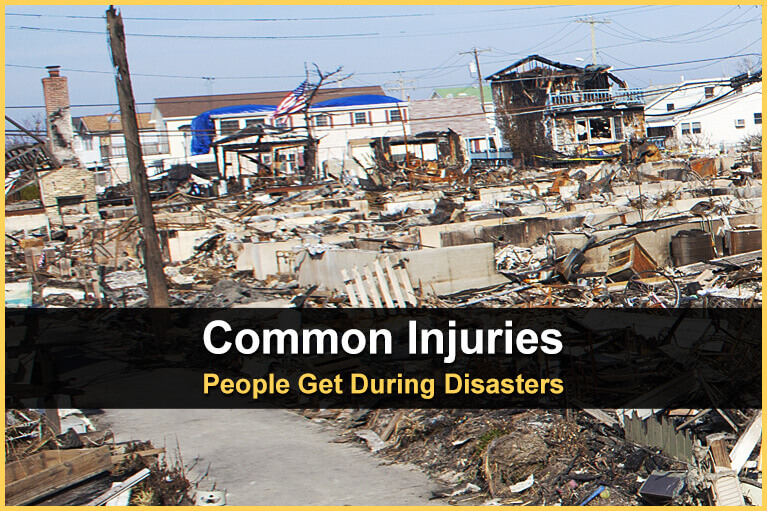This post may contain affiliate links.* Click here to read our affiliate policy.
Estimated reading time: 8 minutes
According to a recent study by Wells Fargo, about 84 percent of Americans live in areas that have experienced a natural disaster in the past three years.
Of those respondents, 54 percent describe those events — including tornadoes, hurricanes, floods, earthquakes, or wildfires — as severe. And 72 percent of the respondents reported that their lives had been affected by a natural disaster at some point.
The growing frequency of natural disasters is taking its toll on all of us. In just the first nine months of 2021, 538 Americans died due to weather disasters, according to the Oceanic and Atmospheric Administration (NOAA). That number is double the number of deaths from disasters that occurred in 2020.
While we cannot predict when a natural disaster will strike, we can take steps to help prevent serious injury and death. This article will explore the common injuries people get in various natural disasters and how to treat them with basic first aid until you can get help.
Hurricanes, Tornadoes, and Floods
The most common injuries that occur during and after a severe storm include:
- Infection from water that has been contaminated by sewage or toxic chemicals.
- Wound infection from sharp objects and flying or floating debris
- Injuries, cuts, scrapes, or broken bones from fallen trees, car accidents, or debris impact.
- Mosquito-borne infections from stagnant water.
For cuts and scrapes:
- Apply pressure to control bleeding.
- Wash your hands before treating the wound.
- Then wash the wound with clean water or soap and water.
- Apply antibiotic ointment.
- Cover the area with a clean bandage.
If you are not able to clean the wound, it is best to leave it uncovered. A covered unclean wound is more likely to become infected.
Examine the wound every 24 hours. Get medical help as soon as possible if the following signs of infection occur:
- Pain
- Swelling
- Heat
- Redness
- Pus
- Odor
- Fever
Here is a video that shows basic first aid for treating a minor cut.
For broken bones, try to avoid moving the person if possible. Movement can cause further injury. Follow these steps while you wait for medical help:
- Stop any bleeding by applying pressure to the wound with a clean cloth or bandage.
- Immobilize the injured area. Do not try to push or realign a bone. You can apply a splint to the area above and below the injured site. Padding the splints can help reduce pain and discomfort.
- Wrap ice or an ice pack in a cloth before applying to the injured area to reduce pain and swelling.
- Watch out for signs of shock. If the person is breathing in short, rapid breaths or feels faint, help them to lie down with their head slightly lower than their torso and elevate their legs if you can.
This video demonstrates how to apply a leg splint in an emergency:
Severe Winter Weather
If you are stranded outside due to a blizzard or other winter weather-related…
